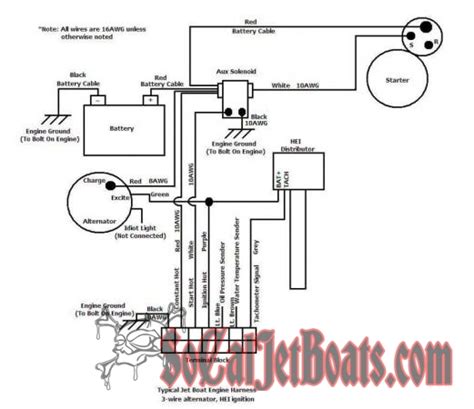How To Hook Up A Boat Tachometer
Ronan Farrow
Apr 01, 2025 · 3 min read

Table of Contents
How to Hook Up a Boat Tachometer: A Comprehensive Guide
So, you've got a shiny new boat tachometer, and you're ready to install it. Congratulations! But before you start fiddling with wires, take a deep breath and follow this comprehensive guide. We'll cover everything from understanding your boat's system to troubleshooting common issues. Let's get started!
Understanding Your Boat's Electrical System
Before you even think about connecting wires, it's crucial to understand your boat's electrical system. This isn't rocket science, but a little knowledge will save you a lot of headaches.
Identifying the Power Source
Your tachometer needs a reliable power source. This is typically a 12-volt DC source, usually from your boat's battery. You'll need to identify the correct wire – usually a positive (+) wire. Never connect the tachometer directly to the battery without proper fuses and wiring.
Locating the Ignition Wire
This is arguably the most important connection. The ignition wire provides the signal that tells the tachometer when the engine is running. This wire is typically connected to the ignition switch itself, or sometimes to the coil. Incorrectly connecting this wire can lead to inaccurate readings or even damage to your tachometer. Consult your engine's manual for the precise location.
Grounding the Tachometer
The tachometer, like all electrical components, needs a proper ground. This usually involves connecting a wire to a clean, bare metal surface on your boat's hull or engine block. A poor ground can lead to inaccurate readings or intermittent functionality. Ensure a secure connection.
The Step-by-Step Connection Process
Now for the main event. Follow these steps carefully:
-
Gather Your Tools: You'll need wire strippers, crimp connectors, a multimeter (highly recommended), electrical tape, and potentially a drill if you need to create new mounting holes.
-
Choose Your Mounting Location: Select a location for the tachometer that's easy to see and has sufficient space for wiring.
-
Run the Wires: Carefully run the necessary wires from the tachometer's location to the power source, ignition wire, and ground. Secure the wires neatly and avoid any sharp edges or moving parts. Use appropriate wire loom or conduit for protection.
-
Connect the Power Wire: Connect the tachometer's positive (+) wire to the 12-volt DC power source via a properly fused inline fuse. The fuse protects the tachometer from power surges. The fuse rating should match the tachometer's specifications.
-
Connect the Ignition Wire: Connect the tachometer's ignition wire to the appropriate ignition wire on your engine. Double-check this connection as it's vital for accurate readings. Refer to your engine's manual for precise guidance on the correct wire.
-
Connect the Ground Wire: Connect the tachometer's ground wire to a clean metal surface. Ensure a good, secure connection.
-
Test the Installation: Before permanently securing the tachometer, turn on the ignition and check the readings. If the tachometer doesn't work, carefully check all your connections.
-
Secure the Tachometer: Once you're confident everything's working, securely mount the tachometer.
Troubleshooting Common Issues
-
No Reading: Check all connections, fuses, and the ignition wire. Use a multimeter to verify power and ground connections.
-
Inaccurate Reading: Check the ignition wire connection and make sure the tachometer is correctly calibrated (if applicable).
-
Intermittent Readings: Check the ground connection. A poor ground can cause intermittent operation.
Essential Tips for Success
- Consult your engine and tachometer manuals: These manuals provide crucial information specific to your equipment.
- Use a multimeter: A multimeter is invaluable for troubleshooting electrical problems.
- Take your time: Rushing the installation can lead to errors and potential damage.
- Safety first: Always disconnect the battery before working on the electrical system.
By following this guide and taking your time, you'll successfully install your boat tachometer. Happy boating!
Featured Posts
Also read the following articles
| Article Title | Date |
|---|---|
| How To Keep Foxes Out Of Chicken Coop | Apr 01, 2025 |
| How To Hang A Rifle On The Wall | Apr 01, 2025 |
| How To Install A Interlock Kit | Apr 01, 2025 |
| How To Make A Hazelnut Shaken Espresso | Apr 01, 2025 |
| How To Keep Birds Off Boat | Apr 01, 2025 |
Latest Posts
Thank you for visiting our website which covers about How To Hook Up A Boat Tachometer . We hope the information provided has been useful to you. Feel free to contact us if you have any questions or need further assistance. See you next time and don't miss to bookmark.
